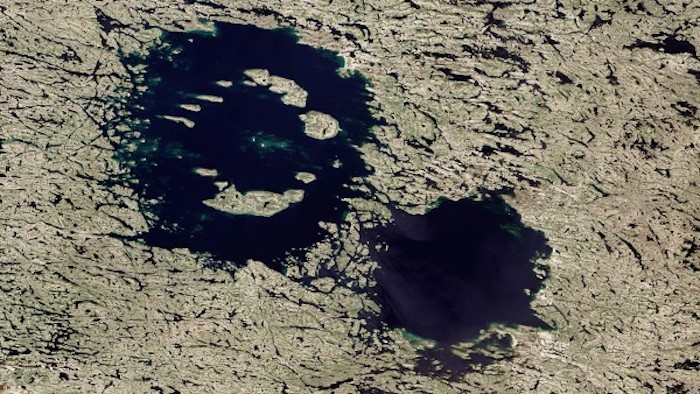.

No more impact craters as big as Canada's Clearwater West and Clearwater East, which measure more than 10 kilometers across, remain to be discovered.
.
Earth's colossal crater count complete
Mars is pocked with more than 300,000 craters, created by asteroid impacts. The moon is blanketed with millions more, too many to count. But the surface of Earth, constantly eroded by wind and rain, hides its history. Just 128 confirmed impact craters have been spotted on Earth’s surface. However, a new study suggests that this low number is not the result of lazy searching; all of the big impact craters on the planet's surface have been found, leaving none to be discovered.
“I'm definitely surprised.” says Brandon Johnson, a planetary scientist at the Massachusetts Institute of Technology in Cambridge, who was not involved in the study. “It’s the first time anyone has done this kind of thing—taking into account the effects of erosion.”
In 2014, Johnson led a similar study, which found that for craters 85 kilometers in diameter and larger, the geologic record ought to be complete. Based on the rate of impacts and the age of the crust, his team predicted eight craters this size, and there are six or seven that have been confirmed. These giant craters are deep enough to survive erosion, but they can be destroyed by plate tectonics, which splits apart, subducts, or otherwise jumbles up the crust the craters sit on—a process Johnson’s study examined.
Now, Stefan Hergarten and Thomas Kenkmann, geophysicists at the University of Freiburg in Germany, have taken the analysis further and found that the documented record is complete down to much smaller impact craters. They combined estimates of asteroid impact rates with rates of erosion, and compared the resulting theoretical crater distribution with what geologists actually see. For the 70 craters larger than 6 kilometers across, the record is complete, they say: There are no more to be found, as the researchers will report in the 1 September issue of Earth and Planetary Science Letters.
On one hand, the result is reassuring, Hergarten says. “It tells us that it’s not just others being too stupid to find new craters,” he says. On the other hand, it suggests researchers should change their focus. Crater hunters should give up the search for big ones and focus on finding smaller ones. Perhaps 350 craters between 0.25 kilometers and 6 kilometers wide remain undiscovered, Hergarten says.
The new paper is consistent with the diminishing returns of crater hunting, says Jay Melosh, an impact crater expert at Purdue University in West Lafayette, Indiana. In spite of ever-improving remote sensing techniques, which enable almost anyone to search for circular features on Earth’s surface, fewer and fewer true craters are turning up, he says. “What the new paper does is give the crater hunters a lot of hope for smaller craters,” Melosh says.
Johnson points out that the current study examines just surface craters. There are also 60 documented craters that have been buried, and preserved, in basins, underneath deep piles of sediment. Some are quite big. One example is Chicxulub, in Mexico, the remnant of the dinosaur-killing impact; another large crater lies underneath the Chesapeake Bay in the eastern United States. So if big is your thing, you’re not completely out of work, Johnson says. “Don’t stop searching,” he says, “just search deeper.”
Quelle:AAAS
4913 Views
